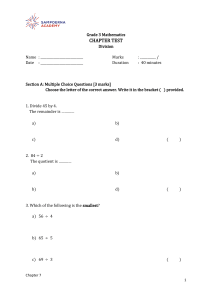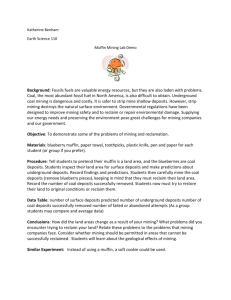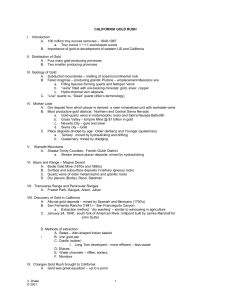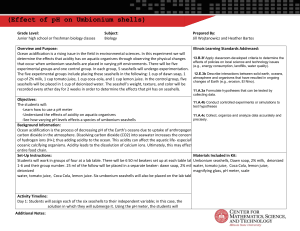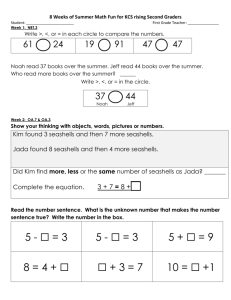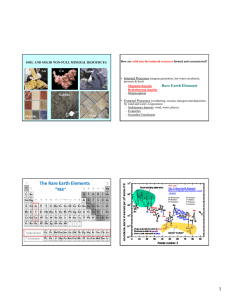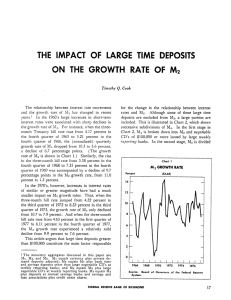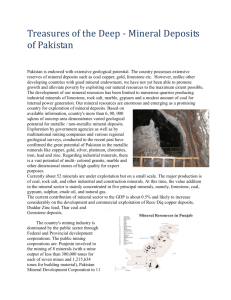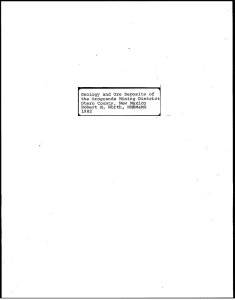chap 4
advertisement
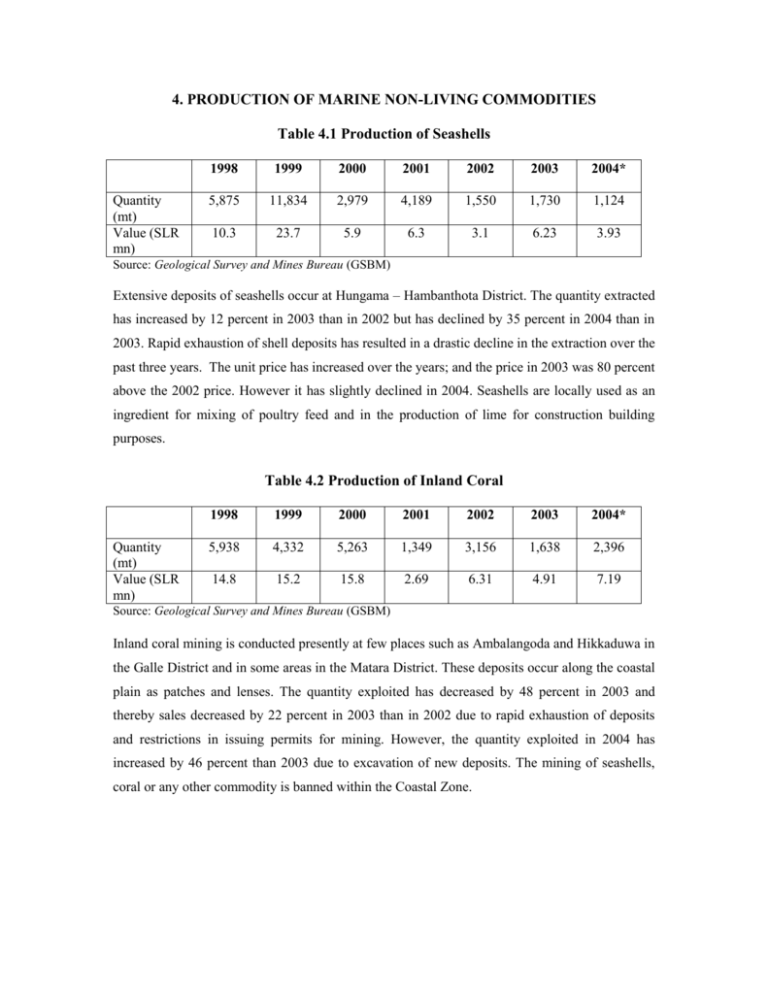
4. PRODUCTION OF MARINE NON-LIVING COMMODITIES Table 4.1 Production of Seashells Quantity (mt) Value (SLR mn) 1998 1999 2000 2001 2002 2003 2004* 5,875 11,834 2,979 4,189 1,550 1,730 1,124 10.3 23.7 5.9 6.3 3.1 6.23 3.93 Source: Geological Survey and Mines Bureau (GSBM) Extensive deposits of seashells occur at Hungama – Hambanthota District. The quantity extracted has increased by 12 percent in 2003 than in 2002 but has declined by 35 percent in 2004 than in 2003. Rapid exhaustion of shell deposits has resulted in a drastic decline in the extraction over the past three years. The unit price has increased over the years; and the price in 2003 was 80 percent above the 2002 price. However it has slightly declined in 2004. Seashells are locally used as an ingredient for mixing of poultry feed and in the production of lime for construction building purposes. Table 4.2 Production of Inland Coral Quantity (mt) Value (SLR mn) 1998 1999 2000 2001 2002 2003 2004* 5,938 4,332 5,263 1,349 3,156 1,638 2,396 14.8 15.2 15.8 2.69 6.31 4.91 7.19 Source: Geological Survey and Mines Bureau (GSBM) Inland coral mining is conducted presently at few places such as Ambalangoda and Hikkaduwa in the Galle District and in some areas in the Matara District. These deposits occur along the coastal plain as patches and lenses. The quantity exploited has decreased by 48 percent in 2003 and thereby sales decreased by 22 percent in 2003 than in 2002 due to rapid exhaustion of deposits and restrictions in issuing permits for mining. However, the quantity exploited in 2004 has increased by 46 percent than 2003 due to excavation of new deposits. The mining of seashells, coral or any other commodity is banned within the Coastal Zone.




